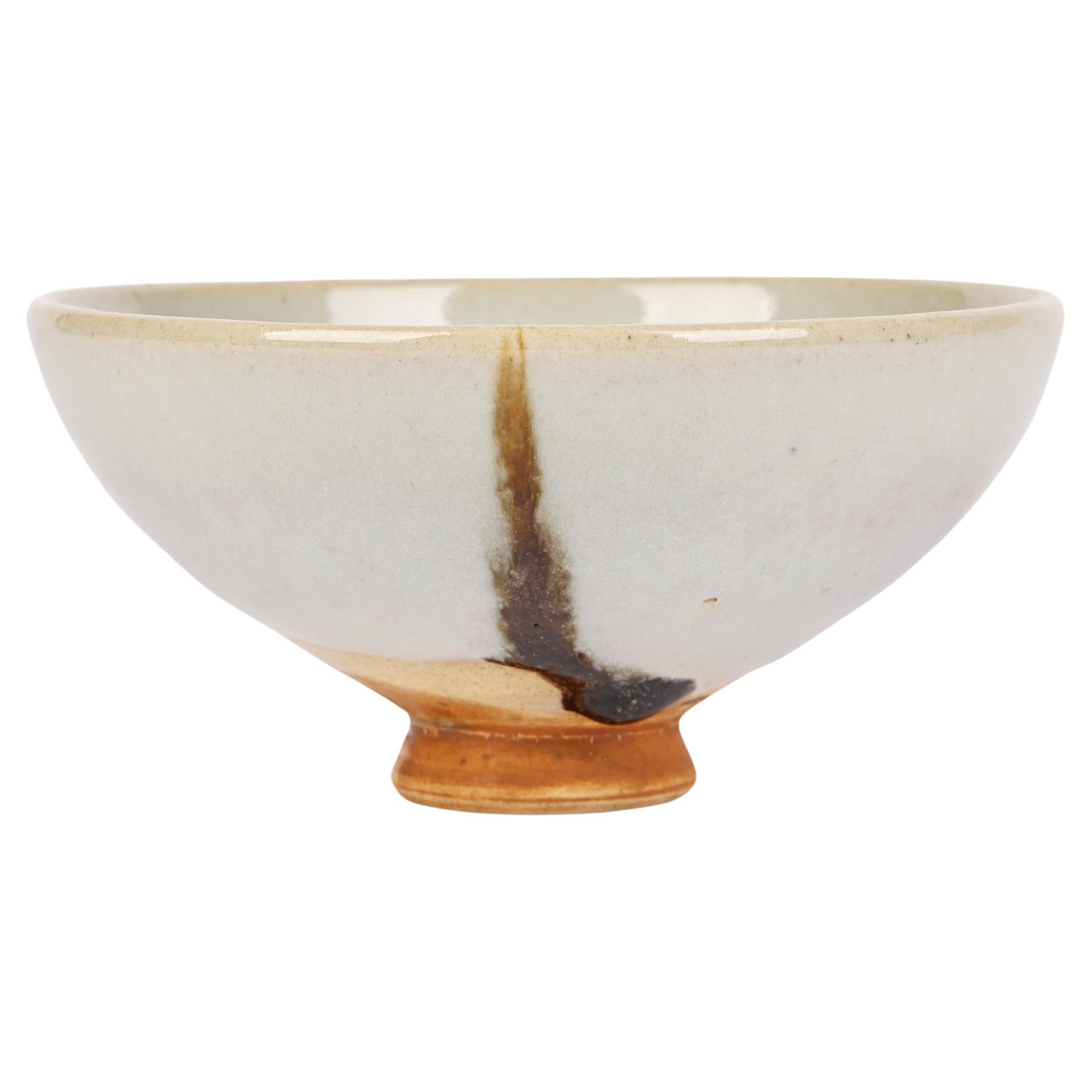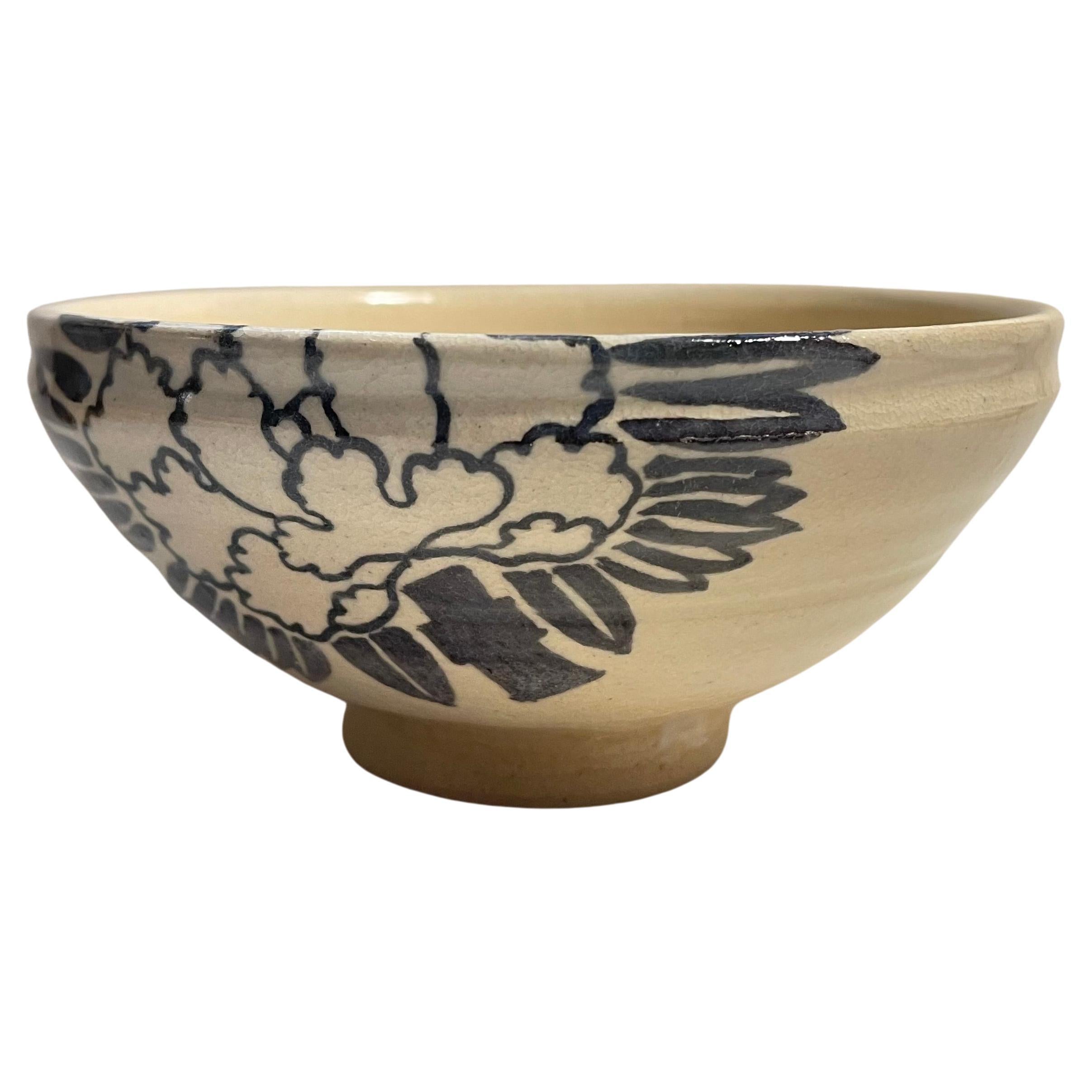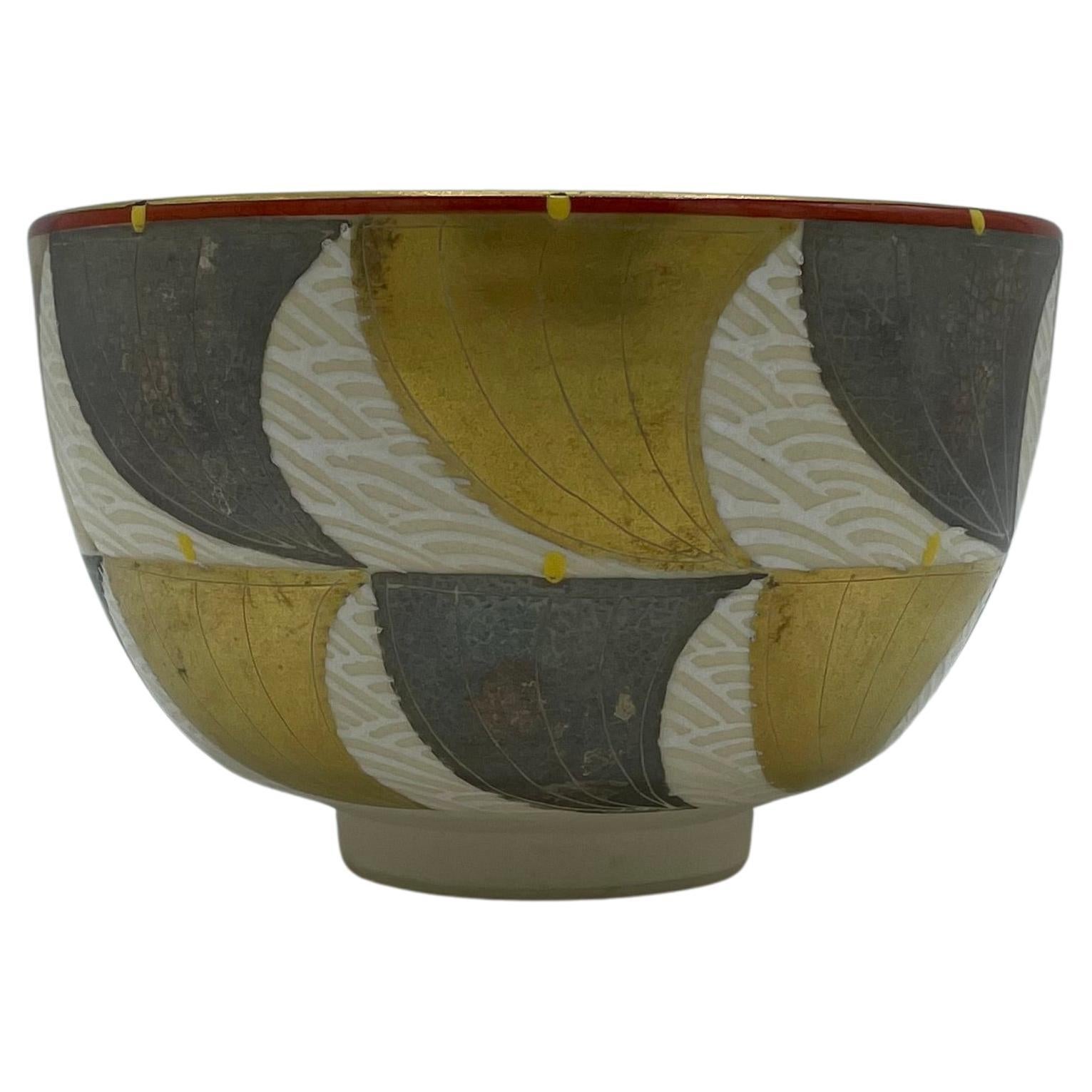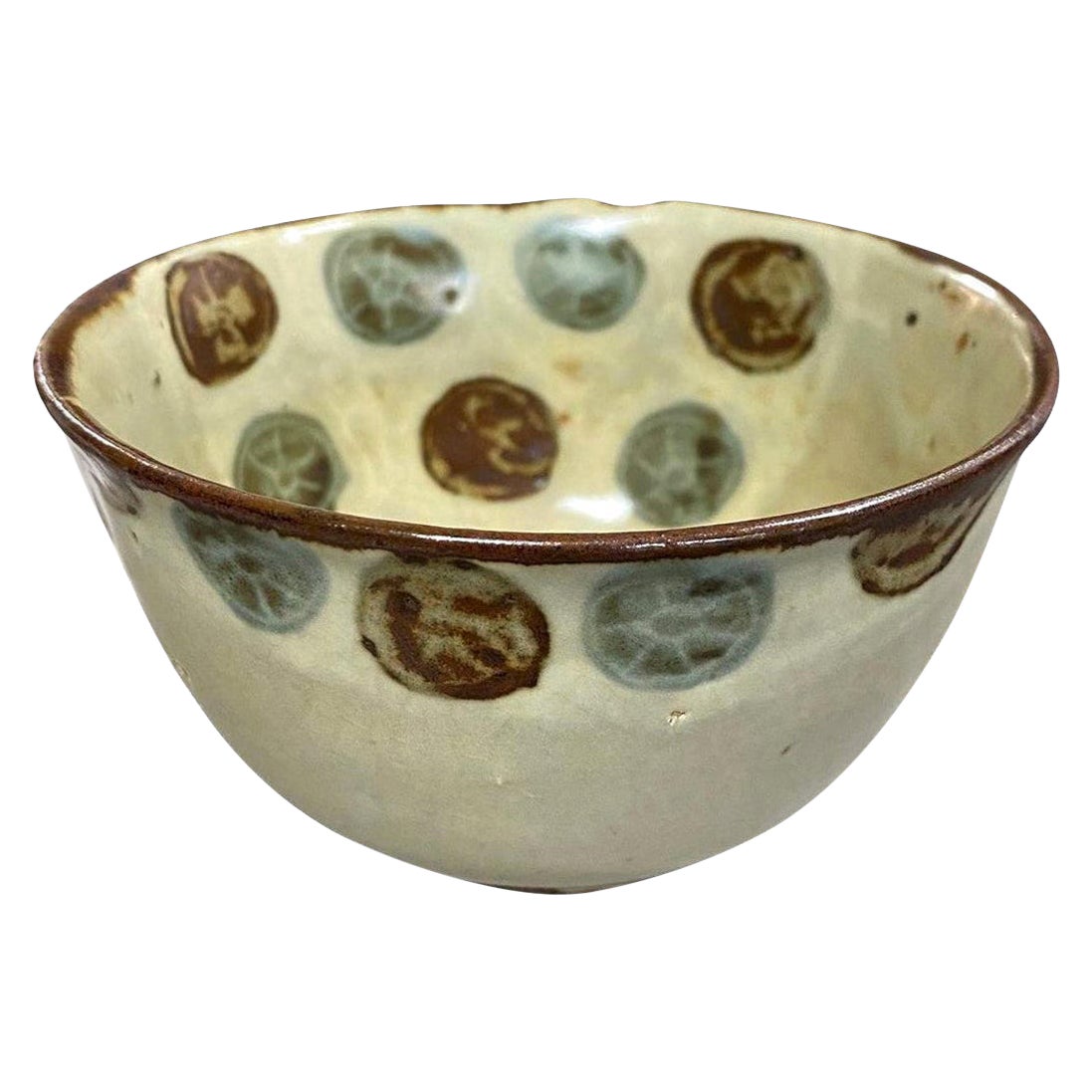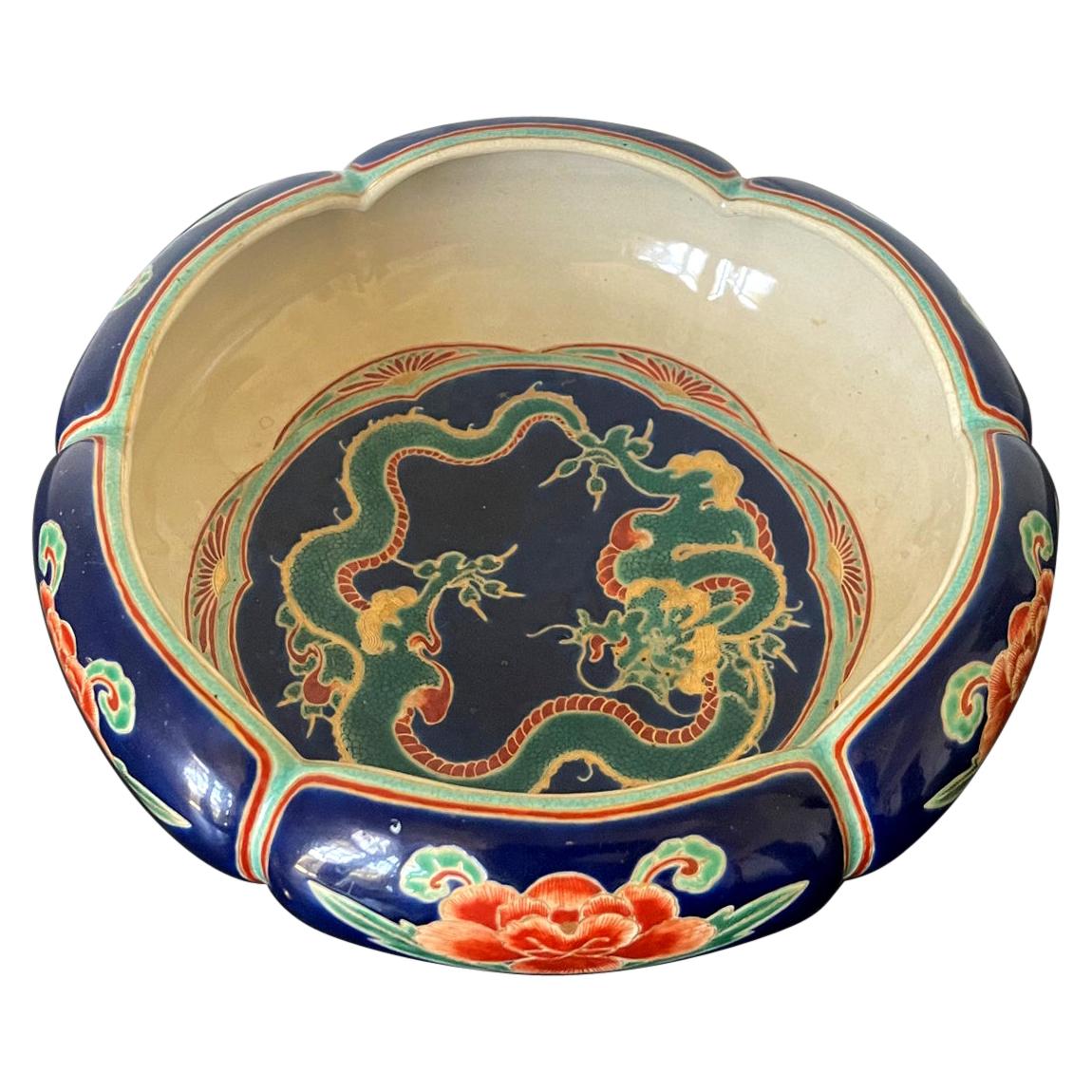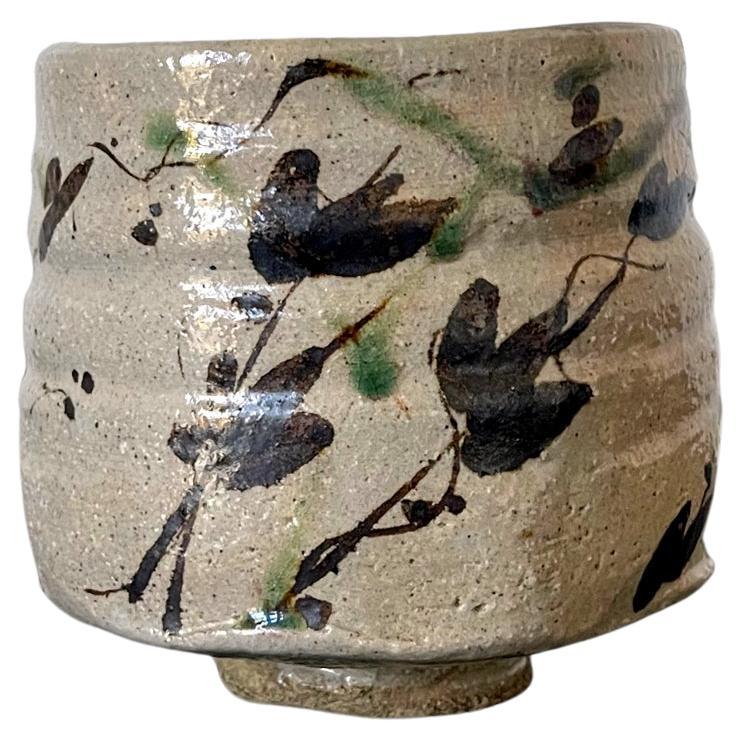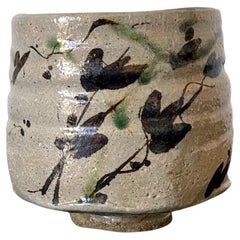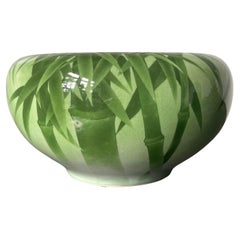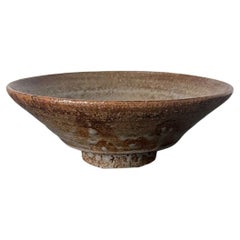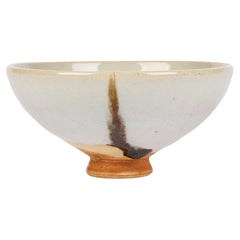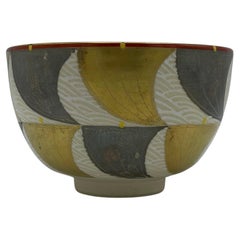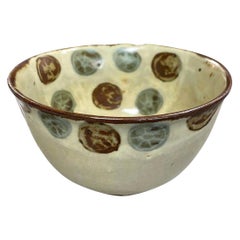Items Similar to Japanese Ceramic Bowl Makuzu Kozan Utusushi Kenzan
Want more images or videos?
Request additional images or videos from the seller
1 of 15
Japanese Ceramic Bowl Makuzu Kozan Utusushi Kenzan
$7,000
£5,351.87
€6,164.28
CA$9,809.15
A$10,950.99
CHF 5,738.15
MX$134,050.86
NOK 72,874.61
SEK 68,711.50
DKK 46,004.63
Shipping
Retrieving quote...The 1stDibs Promise:
Authenticity Guarantee,
Money-Back Guarantee,
24-Hour Cancellation
About the Item
A rare ceramic bowl with overglaze paint decoration by Japanese imperial potter Makuzu Kozan ((1842–1916). Unlike the better-known works Kozan made for the expositions in the west and export to the foreign market, this piece exemplifies his work for the domestic market and the tea ceremony. The bowl was made in the so called "Utusushi" Ogata Kenzan (1663-1743), a celebrated Edo painter and ceramicist. Utusushi is loosely translated as "in the spirit of". It is not at all a simple imitation of a master, but a Japanese concept of embracing the spiritual essence of a master while the creator is free to mix in his or her own unique artistic interpretation and flavor.
The bowl was made to hold fruits during the tea ceremony. It has a very distinguished form with a circular lower body morphing into a square upper portion that further opening with flared rim. The surface has a grey glaze onto which Asagao flowers (Japanese morning glory) on the vines were painted in a free and poetic style. White was used for the petals, green for the leaves with touches of gold highlight. Asagao, the symbol of the summer was rendered in the spirit of Ogata Kenzan, and interestingly the shape of the blossom echoes the unique form the bowl. It was likely reserved for the tea ceremony during the summer months.
Under the base, Kozan was signed in black on a white porcelain plaque inlay.
For two similar examples of Kozan's work Utusushi Kenzan, see Page 168-169 of the book: Sekai ni Aisa Reta ya Kimono Miyagawa Kozan Makuzu Ware (Japanese Edition).
- Creator:Makuzu Kozan (Artist)
- Dimensions:Height: 3.5 in (8.89 cm)Diameter: 7 in (17.78 cm)
- Style:Japonisme (Of the Period)
- Materials and Techniques:
- Place of Origin:
- Period:1900-1909
- Date of Manufacture:1890-1910
- Condition:Wear consistent with age and use. Fine antique condition, minor gilt rubbing lost on the rim as shown.
- Seller Location:Atlanta, GA
- Reference Number:1stDibs: LU945020596902
About the Seller
4.9
Platinum Seller
Premium sellers with a 4.7+ rating and 24-hour response times
Established in 2006
1stDibs seller since 2010
565 sales on 1stDibs
Typical response time: <1 hour
- ShippingRetrieving quote...Shipping from: Atlanta, GA
- Return Policy
Authenticity Guarantee
In the unlikely event there’s an issue with an item’s authenticity, contact us within 1 year for a full refund. DetailsMoney-Back Guarantee
If your item is not as described, is damaged in transit, or does not arrive, contact us within 7 days for a full refund. Details24-Hour Cancellation
You have a 24-hour grace period in which to reconsider your purchase, with no questions asked.Vetted Professional Sellers
Our world-class sellers must adhere to strict standards for service and quality, maintaining the integrity of our listings.Price-Match Guarantee
If you find that a seller listed the same item for a lower price elsewhere, we’ll match it.Trusted Global Delivery
Our best-in-class carrier network provides specialized shipping options worldwide, including custom delivery.More From This Seller
View AllRare Japanese Ceramic Glazed Bowl Makuzu Kozan Meiji Period
By Makuzu Kozan
Located in Atlanta, GA
On offer is a rare ceramic bowl with overglazed design by the famed Japanese ceramic artist Makuzu Kozan (1842-1916), circa 1906-1916. The bowl is rather unusual from the potter's repertoire with its unique glaze colors and decoration, and it likely belonged to a small series that Kozan made in and after 1906. A bowl of similar glaze and nearly identical dragon motif was recorded as a diplomatic present to the British royalty Arthur Connaught (1883-1932) when he represented King Gorge V in Japan in 1906. Other pieces, such as this bowl, were likely made with similar materials and designs afterwards.
Essentially round in form, the bowl has a generous volume with six harmonious lobes. The bottom of the interior showcases a coiled dragon in red, green and gold slithering on a cobalt blue background. The roundel shares an echoing lobed perimeter, which is further outlined by red and turquois bands and rising sun design. The exterior of the bowl features six stylized Japanese camellias...
Category
Antique Early 1900s Japanese Japonisme Ceramics
Materials
Ceramic
Japanese Mino Ware Oribe Type Chawan Tea Bowl
Located in Atlanta, GA
A Japanese Kutsu-gata (clog-shaped) chawan (tea bowl) circa 19th century possibly older. The stoneware bowl potted from buff clay has a slight irregular shape and an unusual depth for a tea bowl. Of Mino ware...
Category
Antique 19th Century Japanese Meiji Ceramics
Materials
Ceramic
Japanese Ceramic Centerpiece Bowl Makuzu Kozan Meiji Period
By Makuzu Kozan
Located in Atlanta, GA
A beautiful ceramic vessel in the form of Bo, the so-called monk's alms bowl from the studio of Japanese Potter Makuzu Kozan, also known as Miyagawa Kozan (1842–1916), one of the most established and collected ceramist from Meiji Period. Born as Miyagawa Toranosuke, Kozan established his pottery studio in Yokohama circa 1870s and later became one of the appointed artists to the Japanese Imperial household. His work was exhibited in many international fairs that the Meiji government participated at the turn of the century and won many grand prizes.
Of a relatively large size, this piece was made as a decorative center piece for display. It was brilliantly decorated with underglaze paint of a green-on-green bamboo motif, using the novel technique developed by Kozan called Fuki-e (the blow painting). As a result, the bamboos appear took on a three-dimensional quality as if appearing in a mist. Known as one of the most creative ceramists, circa 1887, Kozan started experimenting with new chemical colors from the West in the format of his porcelain glaze. New colors allowed him to create underglaze design that appeared bright, smooth and glossy. To create design that is realistic and dimensional, more common in the western paintings, he was inspired by the native Japanese ink painting technique developed around 1900 by Yokoyama Taikan...
Category
Antique Early 1900s Japanese Japonisme Ceramics
Materials
Ceramic
Korean Ceramic Chawan Ido Tea Bowl with Soba Glaze Kuroda Touen
Located in Atlanta, GA
This ceramic chawan (tea bowl) was made in Korea during Joseon dynasty circa 18th to early 19th century. The bowl was of a "Small Ido" form with half-he...
Category
Antique Late 18th Century Korean Other Ceramics
Materials
Ceramic
Japanese Shino Chawan Tea Bowl Edo Period
Located in Atlanta, GA
A Japanese ceramic Chawan (tea bowl) of e-Shino (painted Shino) ware style circa mid-late 18th century Edo period. The classically shaped bowl features an abstract blue paint of blue grass and displays strong characters in the milky white glaze, with overall crawling and crackling effect. One of the most distinctive characteristics of Shino that is exemplified on this bowl is the small pinholes called suana, which tea masters favor (termed as yuzuhada, or citron skin). The milky-white feldspar...
Category
Antique Late 18th Century Edo Ceramics
Materials
Ceramic
Japanese Glazed Ceramic Bowl by Makuzu Kozan
By Makuzu Kozan
Located in Atlanta, GA
Tri-pod ceramic bowl likely used as an incense burner (koro) by Japanese Imperial potter Makuzu Kozan (1842-1916) circa late Meiji period. The signature indicates that it was produce...
Category
Antique 1880s Japanese Meiji Ceramics
Materials
Ceramic
You May Also Like
Chinese Jun Ware Streak Glazed Art Pottery Bowl
Located in Bishop's Stortford, Hertfordshire
A very stylish good quality Chinese Jun Ware pottery bowl decorated with streaked glazes on a red and pale blue glazed ground dating from the latter 19th o...
Category
Antique 19th Century Chinese Other Ceramics
Materials
Pottery
Japanese Matcha Bowl for Tea Ceremony 1980s Showa
Located in Paris, FR
This is a matcha bowl which we use for tea ceremony.
This bowl was made around 1980s in Showa era in Japan.
This is made with porcelain.
Dimensions: 13x 13 x H 6 cm
Category
Vintage 1980s Japanese Showa Porcelain
Materials
Porcelain
Japanese Porcelain Matcha Bowl for Tea Ceremony Kyo Ware Toraku MORISATO
Located in Paris, FR
This is a bowl that we use during tea ceremony. This is made with porcelain and it was made around 1980 in Showa era. This bowl has a style Kyo raku. It is called Kyo ware and it was...
Category
Vintage 1980s Japanese Showa Decorative Bowls
Materials
Porcelain
Ogata Kenzan Signed Japanese Asian Edo Period Pottery Tea Bowl Chawan
Located in Studio City, CA
A spectacularly designed and beautifully made Chawan tea bowl dating back to the Edo period. This work is attributed to Ogata Kenzan (1663-1743) who is wi...
Category
Antique 18th Century Japanese Edo Ceramics
Materials
Pottery
Japanese Matcha Bowl for Tea Ceremony 1990s Heisei Mizuho
Located in Paris, FR
This is a matcha bowl which we use during a tea ceremony in Japan.
There are a signature written on the bottom of this bowl 'Mizuho'.
This matcha bowl was made in Japan around 1990s ...
Category
1990s Japanese Decorative Bowls
Materials
Porcelain
Shinbei Sakakura X (10th) Japanese Hagi Yaki Ware Pottery Chawan Tea Bowl & Box
Located in Studio City, CA
A wonderfully hand crafted and beautifully glazed Hagi Yaki Ware Chawan tea bowl by the 10th Shinbei Sakakura (X). This piece has quite a special feel to it. The Chawan radiates i...
Category
Antique Mid-19th Century Japanese Edo Ceramics
Materials
Pottery, Stoneware
More Ways To Browse
Black Ceramic Bowls
Foreign Ceramic
Antique Japanese Book
Gold Ceramic Bowl
Japanese Bowl Signed
Antique Gold Painted Bowl
Painted Japanese Bowl
Asian Plaque
Kimono Gold Japanese
Black And White Ceramic Bowl
Asian Black And Gold Decoration
Brown Japanese Ceramic Bowl
Antique Mixing Bowl
Antique Japanese Tea Bowl
Japanese Tea Ceremony Ceramics
Morning Glory Antique
Square Ceramic Bowl
Imperial Japanese Ceramic
